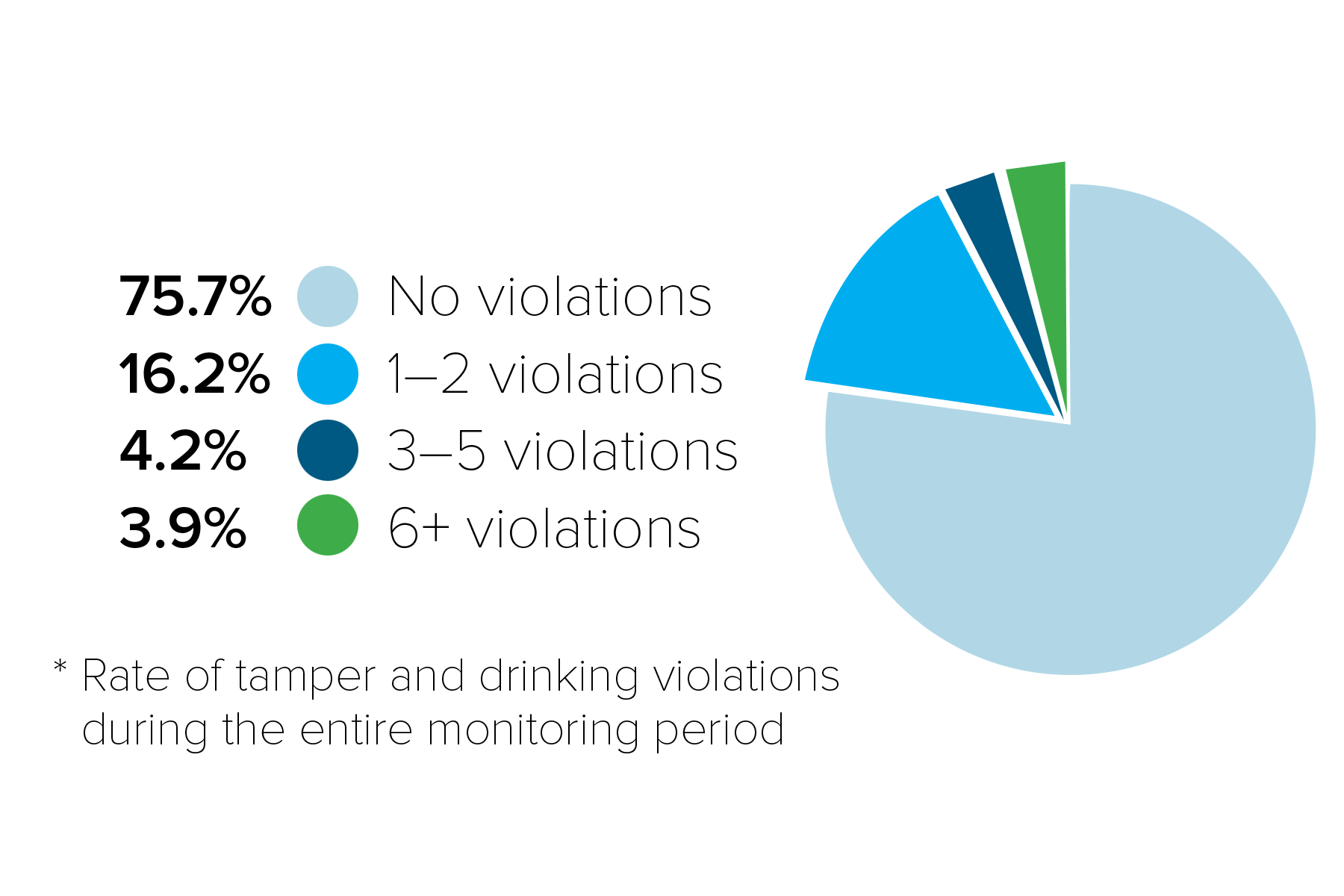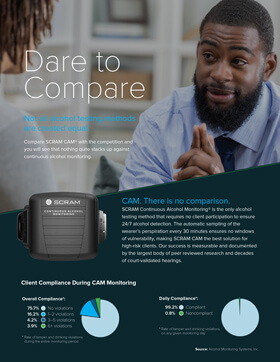With so many different alcohol monitoring technologies available, it can be challenging to determine which device or method will provide the best results for each individual client. It’s important that courts and agencies have all the facts when considering adding one or more monitoring or testing options to a client’s supervision plan. Read on to learn about the differences between breath testing and continuous alcohol monitoring technology.
Sobriety is Not a Point in Time
A common method of alcohol monitoring is breath testing, which usually involves a client traveling to a location to take a breath alcohol test or testing with a handheld device they carry with them at all times. While breath testing can be a good option for lower-risk alcohol clients, this type of point-in-time testing can often be manipulated by clients who have been drinking. Avoiding tests during common drinking times, such as evenings, weekends, and holidays, is a typical way that clients exploit the “drinking window”.
Whether their breath tests are twice-daily, random, or even on-demand, clients may skip tests or find ways to drink around their testing schedule without being caught. For example, 56% of clients on twice-daily breath testing schedules will have one or more violations during their monitoring period.
Client Compliance During Twice-Daily Breath Testing*

Data also shows that clients miss or fail on-demand breath tests more than three times as often as scheduled tests.
Completed, Failed, and Missed Breath Tests


And simply increasing the frequency of breath tests doesn’t solve the problem. In fact, data shows that the more tests a client is scheduled to receive, the more tests they skip.
Breath testing may be a sufficient alcohol monitoring method for lower-risk clients, but can easily be circumvented by those that abuse or are addicted to alcohol.
Continuous Alcohol Monitoring—Increasing Client Compliance and Accountability
The SCRAM Continuous Alcohol Monitoring® (SCRAM CAM®) bracelet is a device that is attached to a client’s ankle and tests their perspiration for traces of alcohol every 30 minutes. Unlike breath testing, the SCRAM CAM bracelet continuously monitors clients for alcohol use and eliminates the need for inconvenient in-person testing.
The SCRAM CAM bracelet can detect the difference between ingested alcohol and environmental alcohol (perfume, environmental “fumes”, hand sanitizer, etc.). And SCRAM CAM’s reliable tamper technology helps prevent circumvention while promoting client accountability. In fact, 75.7% of SCRAM CAM clients remain sober and complaint throughout their entire monitoring period, and 99.2% of wearers are compliant on any given day.
Overall Client Compliance During SCRAM CAM Monitoring*

Daily Client Compliance During SCRAM CAM Monitoring*

Breath Testing vs. SCRAM CAM—The Choice is Clear
Although breath testing is a common alcohol monitoring method, clients can find ways to drink around their testing schedules or avoid testing altogether. By monitoring clients 24/7, the SCRAM CAM bracelet removes the opportunity for clients to miss or circumvent their supervision. When a client knows they are being continuously tested for alcohol use, they are more likely to stay sober and compliant.
SCRAM CAM is the best option for monitoring clients who struggle with alcohol abuse and addiction and not only supports their sobriety but also helps corrections departments improve the safety of their community.
[SCRAM CAM] was the best thing to happen to me. I can’t believe how much better I feel both physically and emotionally. It was beneficial to me and I highly recommend it to anyone struggling with alcohol abuse.
SCRAM CAM Participant


